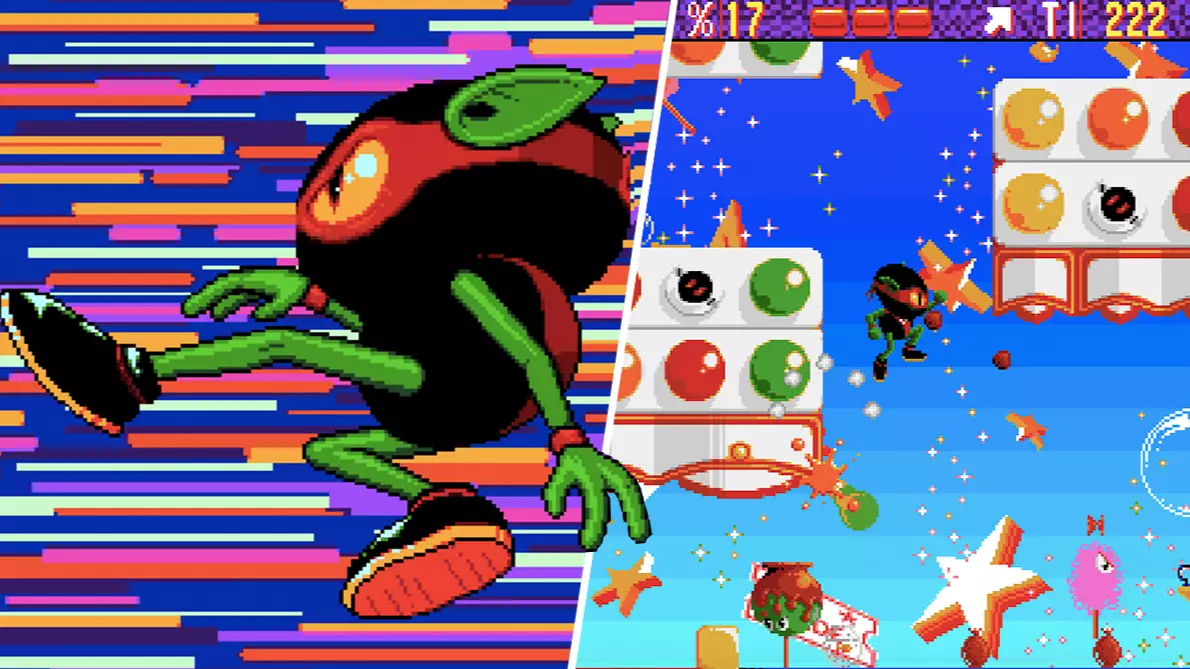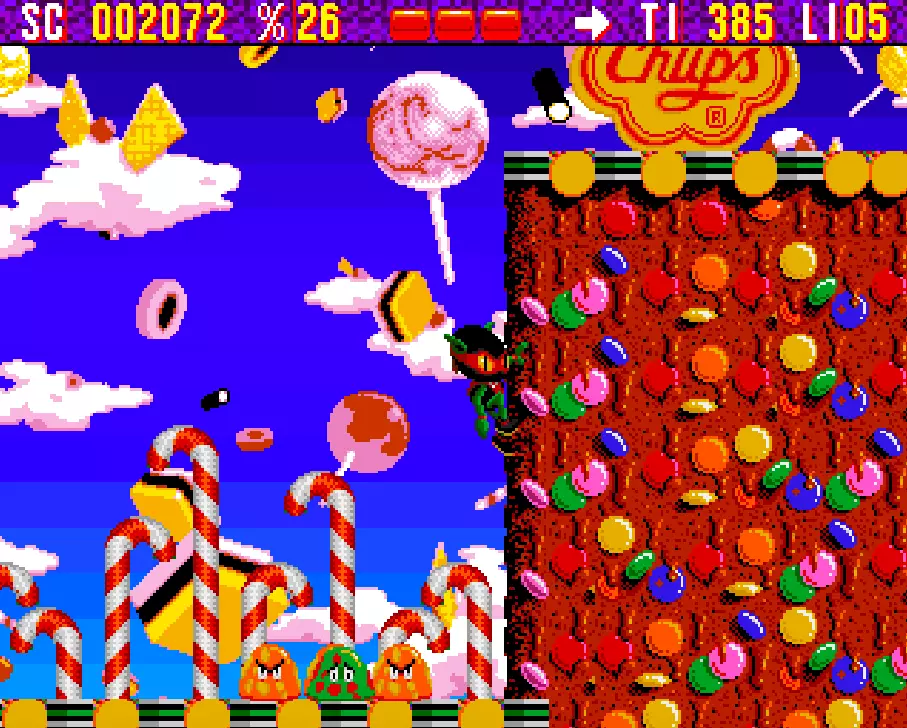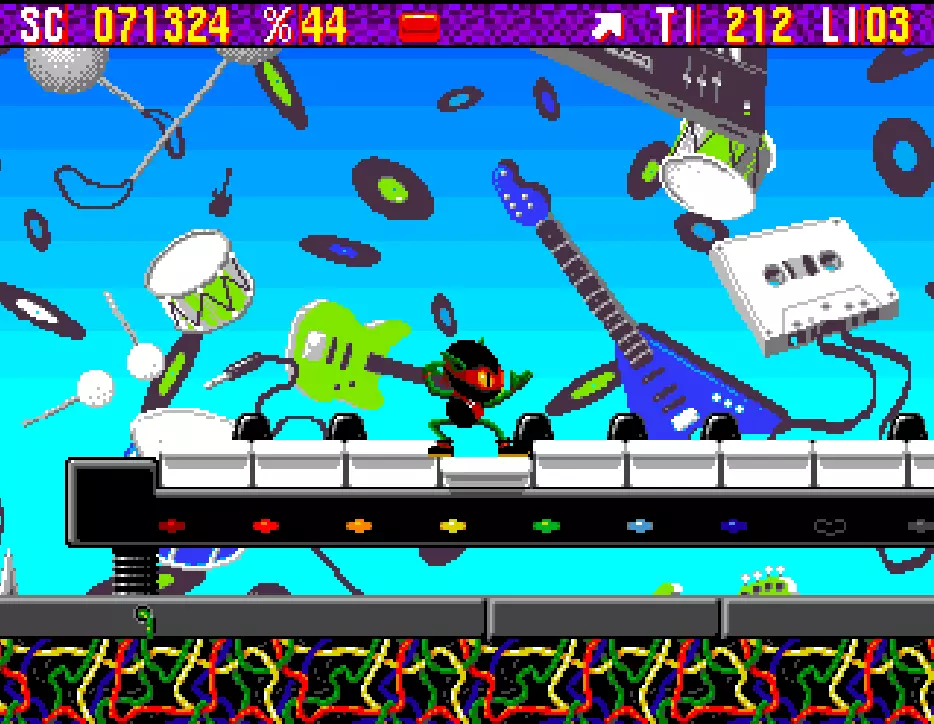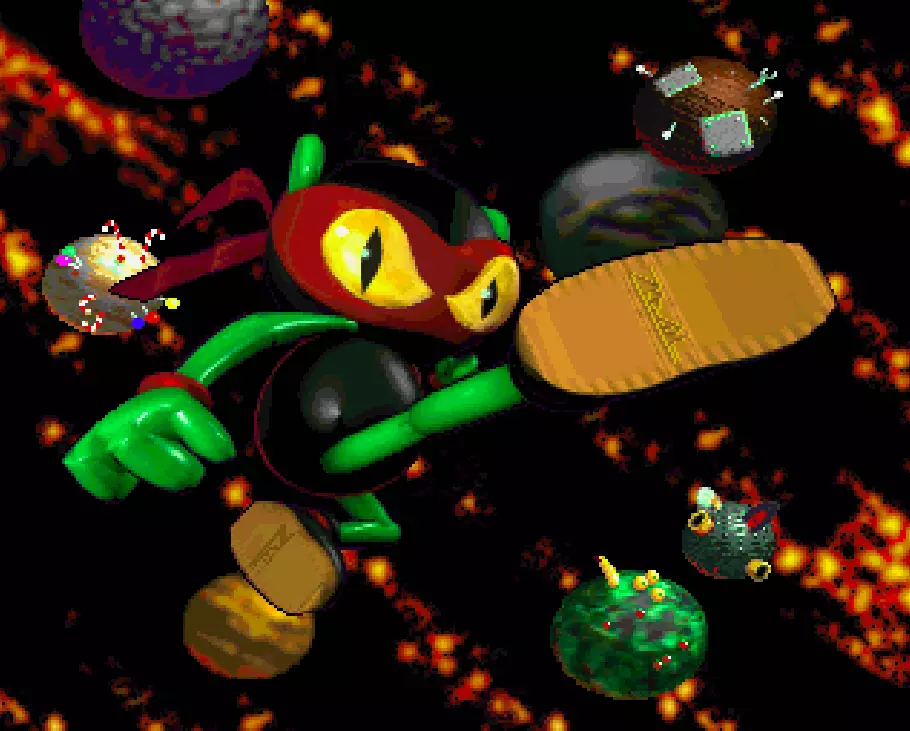
With a brand-new Redimensioned remake available on Steam, it's a good time to rewind to 1992 and revisit Zool: Ninja of the Nth Dimension. Developed by Sheffield's Gremlin Graphics, this high-tempo platformer was soon being billed as a rival to SEGA's Sonic the Hedgehog, an equivalent (if not superior) in terms of style and speed for the Commodore Amiga (and it'll feature on the A500 Mini, next year). But Zool had a problem upon its launch: it was too darn fast for the Amiga's outdated controller.
Typically, Amiga users played their games with either a mouse or a joystick. You could plug a SEGA controller into the computer - Master System or Mega Drive worked fine - but the mapping would be the same, with the d-pad serving as the joystick and only one of the face buttons, A or B (or C), being the 'fire' of the joystick. So Zool was built around a single-fire controller scheme, with up on the stick/d-pad making this creature (an "interstellar cosmic dweller" in the manual) leap vertically. Many Amiga games used up for jump, whereas consoles stuck to the face buttons - imagine trying to play Super Mario Bros. with dash on a face button and up as the jump, no thank you. Other Amiga games had been fine like that, so, why worry?
Zool is included on the upcoming A500 Mini 'console' - check out its reveal trailer, below
But Zool's whole thing was its speed - which, even today, is occasionally quick enough to almost leave the screen's scrolling behind, Sonic 2 style, and render our ever-accelerating hero vulnerable to incoming spikes and enemies. With as much verticality to levels as there is straight-line legging it - the titular character can also climb walls, which helps to find bonuses and power-ups - Zool's controls needed to be fantastically precise in order to balance its rapid traversal with accurate navigation. And sadly, that wasn't the case on the original Amiga release. (To its credit, Redimensioned zooms the screen out somewhat, which helps the player avoid a skewering.)
Advert
Despite a very warm reception from the specialist Commodore press - they almost had to go with strong reviews, given their own preview-period positivity - Zool's up-to-jump, diagonals-to-slide, one-button-for-everything-else gameplay felt hopelessly outclassed by even the original Sonic's elementary interface - which was very similar but crucially used a button to jump. Zool was quick, sure, but it felt uneven, uncomfortable with itself, and was ultimately easier to get through when levels were taken slower, more methodically. It was safer to carefully pick off enemies rather than flow through them, in order to collect enough sweets (the Chupa Chups branding was something else, wasn't it?), toys, fruit or musical instruments to activate the golden-disc exit token.

So Zool's conversion to consoles made sense: now you could play with a face button to jump. And having also dabbled in the Mega Drive port of the game, which was released a year after its Amiga debut, I definitely preferred the control pad over the joystick. But arriving after Sonic 2, and with the third mainline 16-bit Sonic due in early 1994, Zool didn't strike quite the same chord with SEGA reviewers as it had Amiga scribes. It was much of a muchness, in an era dominated by side-scrolling action-platformers.
But Zool wasn't to be denied the largest potential audience possible. The game also made its way to several other platforms, including Commodore's own ill-fated CD32 console, the Super Nintendo, SEGA's handheld Game Gear, the 8-bit Master System and Nintendo's mega-successful Game Boy, where its vivid palette was naturally rather more muted (and its slower speed actually made the game easier to manage). It was also released for MS-DOS, Acorn Archimedes and the Atari ST - so while it's generally regarded as an Amiga title, it actually graced many more computer screens.
Advert

Retrospectively, Zool is rather left behind when conversations turn to outstanding (pre-3D) platformers of the 1990s - mainly because there were a lot of them. Super Mario World and Yoshi's Island, Donkey Kong Country and its sequels, Sonic 2, 3 and CD, Dynamite Headdy, Ristar, Tomba, Disney's Aladdin, and so many more - Zool's not in the same league as these classics, be they commercial hits or not, and nor is its own sequel of 1993. It's not bad, at all, especially when tackled with a pad - and providing you can keep up.
Perhaps Zool's pre-release hyper was its undoing. It was the (lollipop-sucking, Casio-stepping) Cyberpunk 2077 of its day, billed as such an event that the reality could never match expectations. Amiga magazines talked about it being the system's own Sonic, and more, but ultimately it could never catch up to the hedgehog's ever-spinning sneakers. And in Gremlin's defence, staffers of the time have said that they only saw Sonic the Hedgehog midway through Zool's development. It was more a case of the press aligning this as a competitor, than its makers themselves, but forevermore Zool became known as the game that tried to be like Sonic, and fell short. Hence, this piece's headline. Sorry, not sorry.

Advert
But Zool is nevertheless an interesting game to revisit, to see how a studio set themselves the unenviable task of creating a character and a game to really represent a zenith of a genre on the Amiga - and, by virtue of the press that heralded it, a realistic rival to SEGA's mascot. They were minnows, really, up against the monolith of one of Japan's foremost gaming giants, so the odds were always against them. It was unfair to expect a victory, in the circumstances.
Played today, though, the game's dazzling art and catchy music both stand up, although the former can be tough to appreciate when you're really whizzing by it. Its level designs showcase extraordinary imagination, in terms of style and secrets (have a little tinkle on the keyboards, why not) hidden within - they don't make much sense, but that doesn't really matter. The joystick controls still suck, but get it played with a pad (which the A500 Mini should provide, too), and Zool is a fun enough way to platform your way through an hour or so, regardless of whether or not you've much nostalgia for it. And Zool himself? Well, he's never going to receive a Smash Bros. invite, but amid the slew of mid-'90s platformer protagonists, there sure are worse out there. And he's not an ant... right? Right.

Zool is GAMINGbible's Game of the Month on Antstream Arcade, an online games-streaming service offering thousands of arcade and retro titles covering a range of iconic platforms. The service is free to use, with premium options available, so you can dive right in and see what Zool's all about from the comfort of your own PC, Mac, Android device and more. Find features on our previous Game of the Month selections, as follows: Alien Breed, Cannon Fodder, Earthworm Jim, Metal Slug, Mortal Kombat.
Featured Image Credit: Gremlin Graphics Software Limited, MobyGamesTopics: Retro Gaming